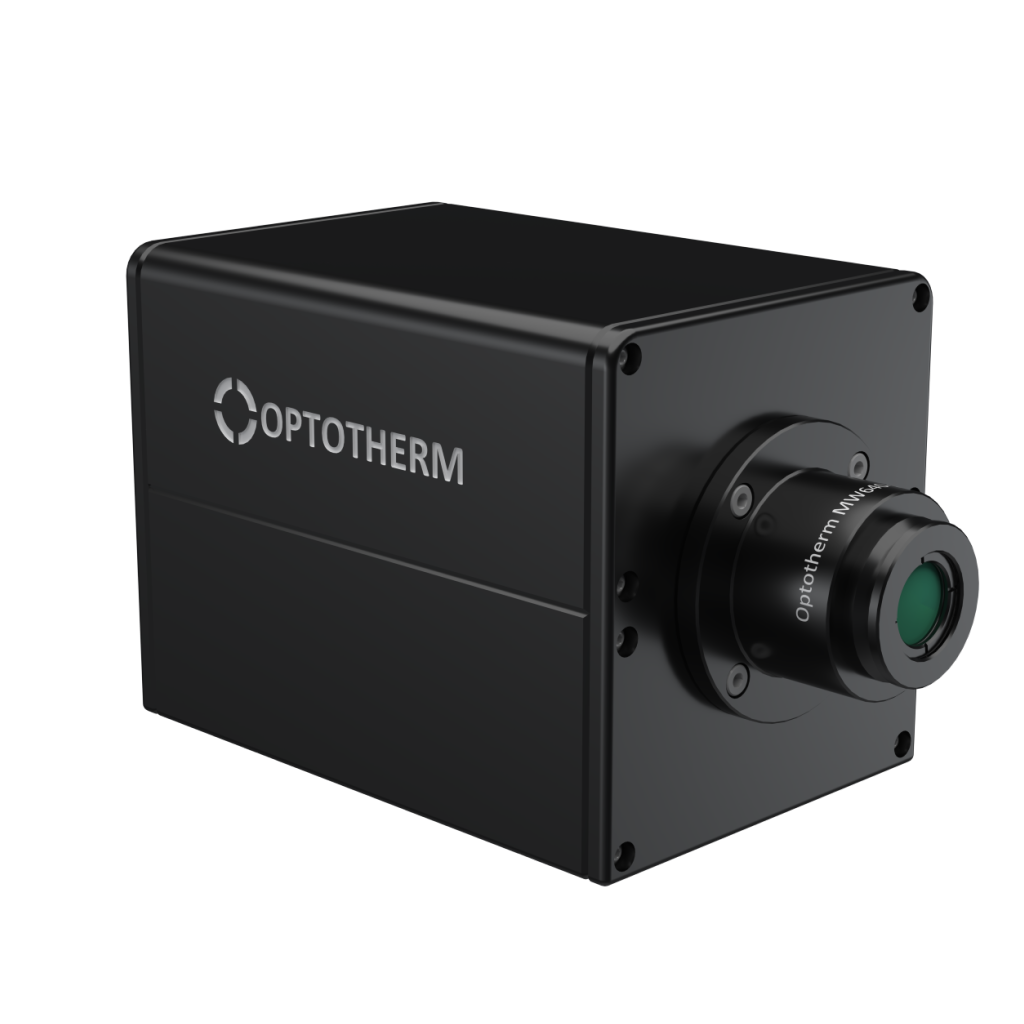Overview
MW640-15 Camera (3.7-4.8µm)
The MW640-15 is Optotherm’s most sensitive thermal imaging camera, providing spatial resolution down to 2μm and captures images at 100Hz. Due to the camera’s high image capture rate, lock-in tests can be performed with test frequencies up to 25Hz, reducing thermal diffusion and improving fault location. Because silicon is partially transparent in the MWIR range, features and metallization can be observed when testing devices from the backside. The MW640-15 camera also provides the ability to see through window materials commonly used in chip testing, such as silicon carbide.
Primary advantages of MWIR over LWIR for Lock-in Testing:
- Higher spatial resolution of 2µm/pixel versus 5µm/pixel for LWIR due to short working wavelength and diffraction limit of lens design.
- Higher transmission of Silicon (~50%) between 3-5µm allows viewing semiconductor features through Silicon.
- Higher detector sensitivity reduces lock-in test time and allows detection of lower-power faults.
- Higher camera frame rate improves lock-in test sensitivity and allows lock-in testing at higher cycle frequencies to isolate faults on thin devices.
Applications
- Semiconductor device failure analysis
- Circuit board failure analysis
- Backside analysis through partially transparent silicon
- Microscopic temperature measurement and analysis of features down to 2µm in size
Compatible Lenses
Specifications
Detector
Sensor Technology | Photovoltaic Mercury Cadmium Telluride (HgCdTe / MCT) |
Cryogenic Cooler | Stirling cycle micro-cooler (0.5 W) |
Dewar | Vacuum sealed metal (MTTF > 10,000 hours) |
Cold Shield | F4 |
Detector Pitch | 15 µm |
Array Size | 640 x 512 pixels |
NETD* (f/# 1 optics) | < 25 mK |
Spectral Response | 3.7 – 4.8 µm (3700-4800 nm) |
Camera Design
Optical Interfaces | Cold shield, cold filter, dewar window |
Dewar Heat Sink | Cooler stator finned structure |
Leak-free Dewar Vacuum | Reusable electrically activated getter device |
Status Lights | LED status light |
Camera Control and Image Output
Frame rate | 100 Hz (1,000 Hz with 160 x 120 windowing) |
Camera Control | Camera Link UART† |
Image Data Transfer | Camera Link† |
Cool Down Time at 22°C ±2°C | < 7 min 30s |
Power
Input Voltage | 24VDC (5A max) |
Power Consumption at 22°C ±2°C During Cooldown Time During Regulated Phase | < 17 Wdc < 7 Wdc |
Physical
Ambient Operating Range | -40°C to + 71°C |
Ambient Storage | -54°C to + 71°C. |
Camera Dimensions Max Length with Relay Lens Max Length with Turret | 162 x 110 x 120mm (l x w x h) 203 383.5 |
Camera Weight | 3 kg |
Camera Mounting | 5 x M6 on 25 mm centers |
Lens Connection | Single Lens Adapter Turret (4 threaded positions) |
Moving Parts | Circulation Fan Software fixed-pattern noise reduction |
* Noise Equivalent Temperature Difference (NETD) specifies the smallest temperature difference that can be detected. The value stated is NETD at 100 Hz frame rate.
† Camera models using Camera Link are only compatible with Windows 10 Operating System. Camera models using USB are compatible with both Windows 10 and Windows 11 Operating System.
Setup, Operation, & Maintenance
The MWIR camera is cooled by a mechanical Stirling cooler which cools the detector to -190°C. Stirling coolers have a limited life span with an MTTF (mean time to failure) of ~10,000 hours. This is a long time, however if left on continuously for 1 year this would be 8,760 hours. Therefore, to prolong life the camera should be unpowered after each use. If it will be used intermittently throughout the day, however, it should be left on because On/Off cycling can also shorten lifetime.
Troubleshooting
Click the link below to view the Support Forum posts for this topic.
[Insert link here]
